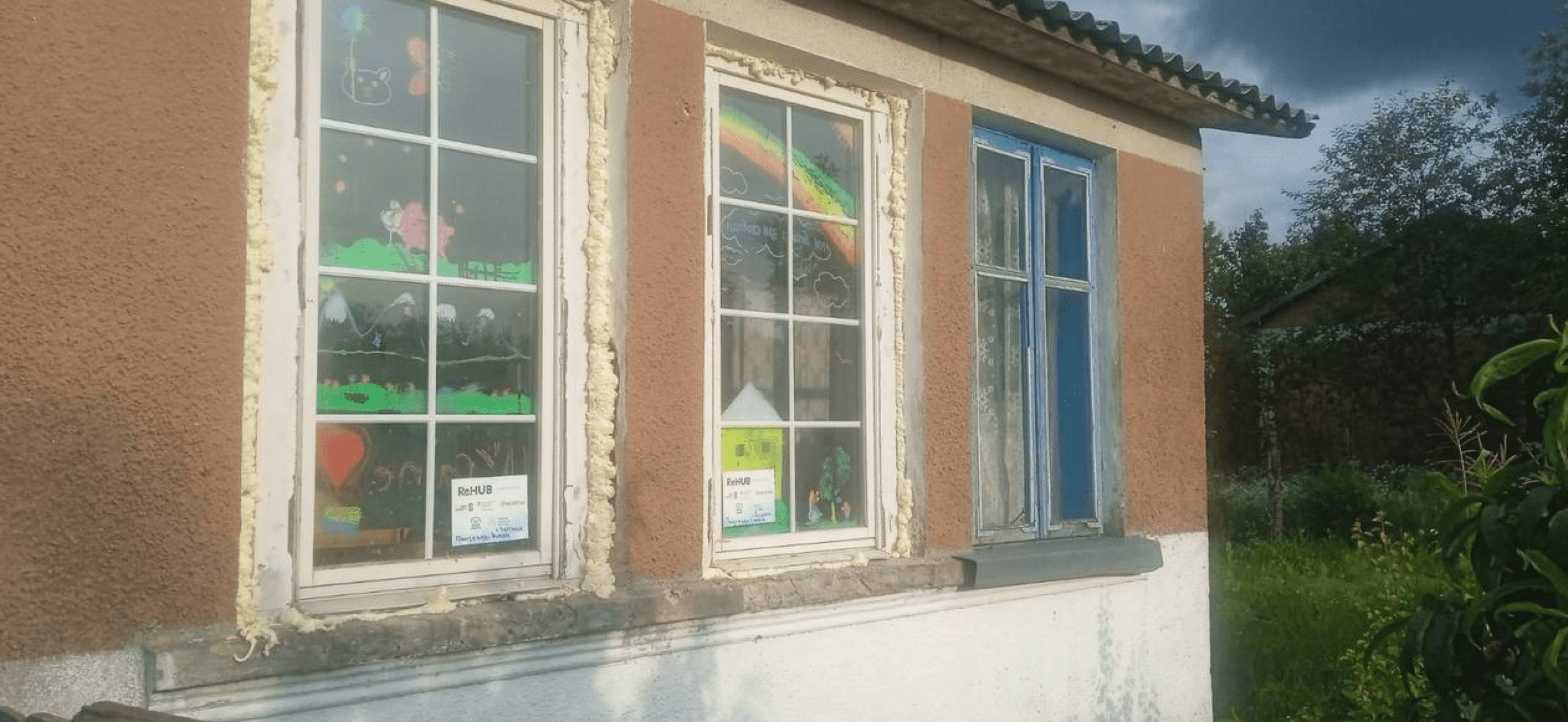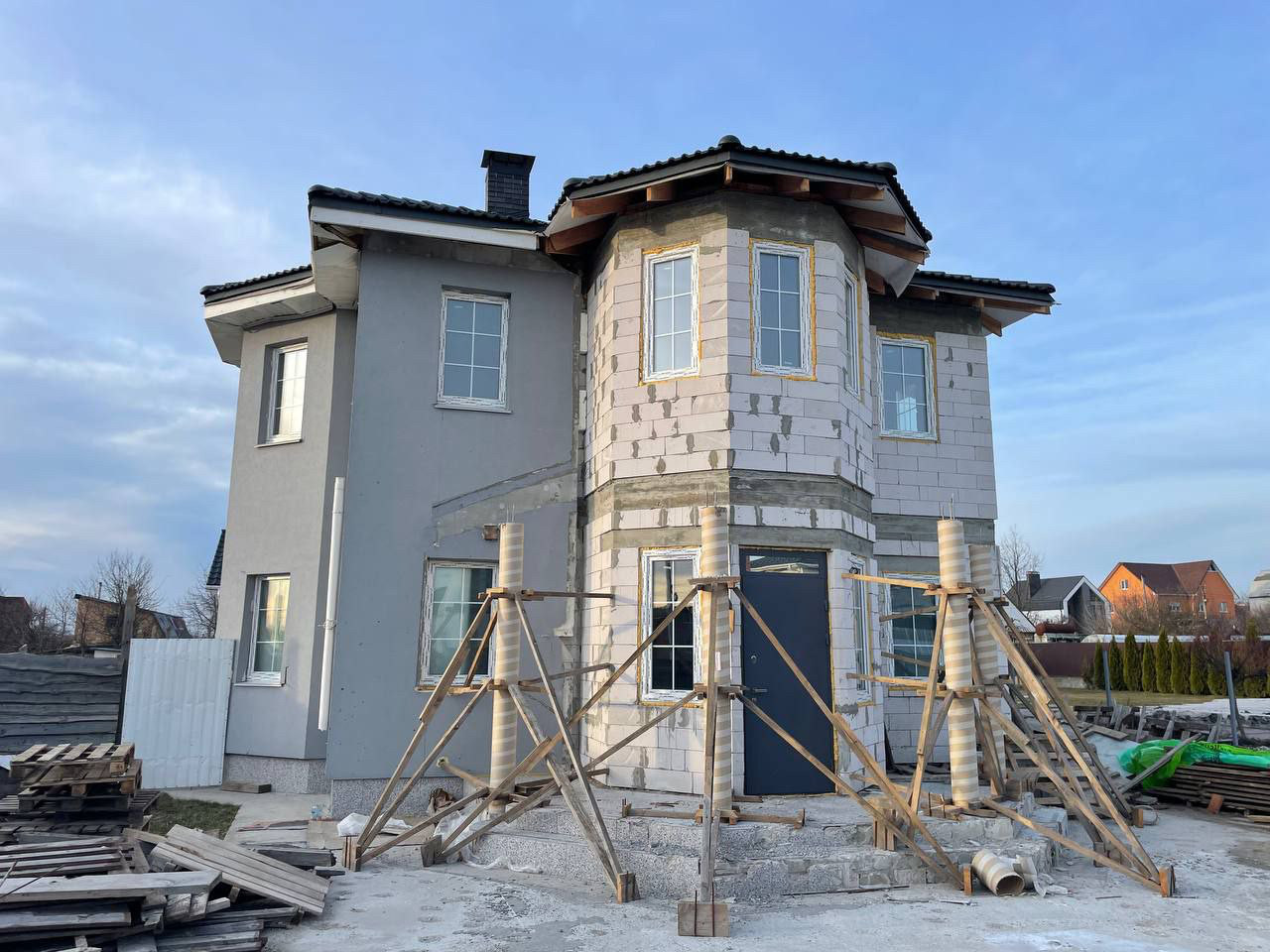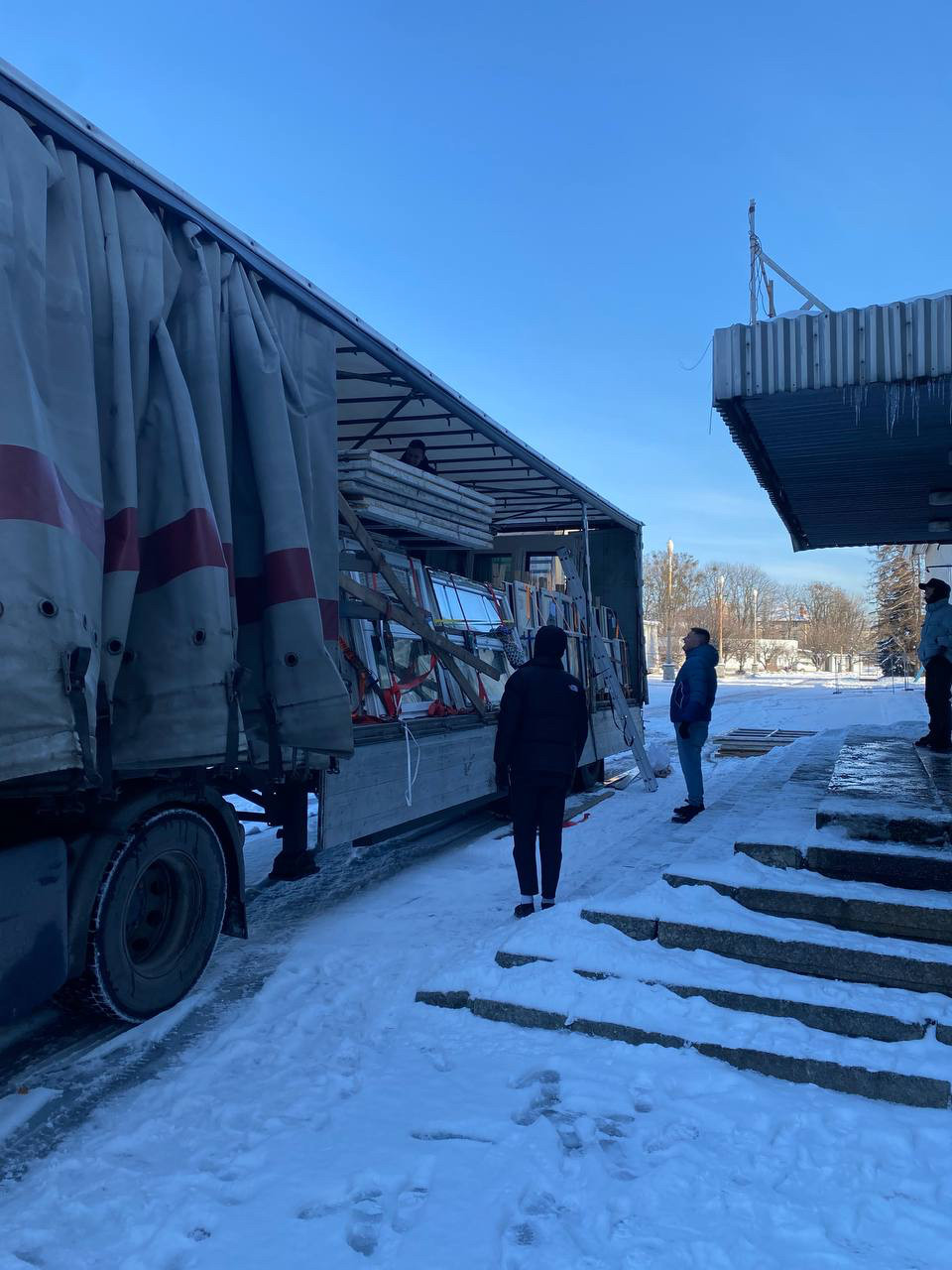Windows for Ukraine
Originating in response to the full-scale Russian invasion of Ukraine, "Windows for Ukraine" laid the foundation for RE-WIN, an interdisciplinary team committed to effective CO2 reduction and social impacts. RE-WIN promotes circular economy principles, offering a transformative model for war-torn areas internationally.
In an interview with the editor of syg.ma Konstantin Koryagin, one of the RE-WIN’s co-founder Martina Bischof, a swiss architect and art historian, discusses the project’s origins, its theoretical underpinnings, and the implementation of circular economy practices.
The series of materials on architecture, infrastructure, and the landscapes of Eastern Europe, Caucasus, and Central Asia was made possible thanks to the support of the Swiss Arts Council Pro Helvetia.

How did RE-WIN start, what was its initial goal, and how did its program evolve over time?
The war in Ukraine was the impetus for the "Windows for Ukraine" initiative and for the subsequent founding of the association RE-WIN. We aim to demonstrate, in practice, how CO2 can be saved effectively alongside maximum social benefit. RE-WIN was initially founded in autumn 2022 by a group of architects, urbanists, and engineers and has meanwhile evolved into an interdisciplinary team that collaborates and manages the processes. The members of RE-WIN want to make a contribution within Switzerland by supporting the goal of becoming construction waste-free by 2050. Internationally, we want to promote reuse as part of the reconstruction strategies in war areas by building on historical techniques and updating them through our practice. RE-WIN wants to use existing resources to contribute to a culture of care and to the preservation of our environment and its biodiversity as a whole. As part of these goals, we are committed to taking care of the grey energy contained in the built environment.
What theoretical framework is behind the practice of reuse in architecture and the concept of circular economy? Which texts and authors serve as the main driving force of this movement, if it could indeed be called a movement at this point?
Reuse is not a new invention, but rather a cultural technique that has been used and developed in all cultures to this day. Accordingly, there are numerous associated theories and strategies in architecture, urban planning as well as in heritage conservation practices that deal with the reconstruction of cities, spolia culture, repairing, reconstructing, reusing, and preserving architectural structures. In addition, the basic attitude of circularity — or the culture of change that you might refer to as a movement — is closely linked to issues of social responsibility, community, and care. In my opinion, there is a wide range of theories and texts that could be mentioned: starting with historical texts by Eugène Viollet le Duc or John Ruskin on reconstruction or material, then there are contemporary publications such as the compendium "Bauteile Wiederverwenden" and also various other specialized literature deriving from universities and universities of applied sciences. These are, in a way, very much linked also to important literature on climate-related topics and planetarian caretaking by popular scientists such as Ursula Le Guin, Silvia Federici and Donna Haraway.
RE-WIN wants to using existing resources to contribute to a culture of care and to the preservation of our environment and its biodiversity as a whole
What are the most important architectural projects made within the circular economy approach? Could you name a few sources of inspiration?
Probably the best-known current project in Switzerland is K118, a project by baubüro insituе and Zirkular that is owned by the Abendrot Foundation and located in Winterthur. K118 is a pioneering contemporary project that boasts an impressive 60% share of reused materials. There are also the architects from studio Aequipe who are working on the circular school building “Walkeweg” in Basel. In Zurich, Gramazio Kohler will soon be building the Juch Areal recycling center and parts warehouse, which is meant to set new standards. Studio Burkhardt is collaborating with the foundation SKKG in order to develop a cultural realm in Winterthur. Other groups in Switzerland who are realising innovative projects in circular structures include the offices of MOKA, N11, Christian Jelk, and Flury+Furrer. In France, I know the Grande Halle de Collombelle that was realised by Encore Heureux, and in Berlin, the Tierpark Berlin by ZRS Architekten is a well-known example of a circular implementation. Basically, it has to be said that every office that is primarily committed to the preservation of existing buildings is pursuing a sustainable practice; I think this is an important point, because it shows that in general, every architectural practice has the opportunity to behave sustainably. Not necessary to mention that this is a pressing and non-negotiable issue. Specialist planning offices Zirkular, Sumami, and denkstatt sàrl, are actual key players alongside recently established specialist centers and hubs. They prepare lines of action and create positive precedents for legislation, standardizers, and institutions. Furthermore, it is the universities of applied sciences for architecture that make key contributions to the transfer of knowledge and the creation of structures that promote recyclable construction in Switzerland.
Of course, there are many historical examples that demonstrate reuse and therefore certainly play a part in this discourse.


What do you think about reusing existing spaces and gentrification? Is a non-profit path or some kind of balance possible?
Construction in existing buildings is one of the most important parameters within the processes of circular construction. When a building is demolished, waste is produced; we want to reuse this “waste” and strongly suggest the importance of redefining the notion of “waste” into “resource”. If buildings are not demolished, there is no need to reuse the resource, so the CO2 bound in these materials is effectively preserved. Quite common sense, right? If we manage to expand the existing building stock in the future and, where necessary, add reused materials instead of consuming new resources, we can generate living spaces and commercial areas without burdening the climate. This brings us one step closer to the climate protection targets we have set ourselves politically.
This also applies to public space and, if I understand you correctly, you are also addressing a socio-political point with the issue of gentrification. Gentrification in itself also has a "circular" character, but it is characterised by capitalist features of devaluation and revaluation and affects urban spaces under the conditions of capitalist urbanization. I believe that modern gentrification processes can be actualised through circularity in construction; politicians can seize the opportunity to set the political course so that the players in the construction industry are enabled to act and restructure their industries in a way that allows existing structures to be consistently preserved.
It is often said that it is important that the principles of the circular economy are laid down already in the initial stages of design. In this context, how can RE-USE and the principles of circular economy help in the reconstruction of Ukraine, a country that is experiencing a war of colossal destruction? What could be the benefits of this approach?
The principles of reuse have always been an integral part of reconstruction strategies in war-ravaged areas. This means that the rubble resulting from bombing becomes raw material that can be reused after the separation of parts and partial reprocessing. It can even be used for landscaping, as was the case in Berlin, for example. With the "Windows for Ukraine" project, RE-WIN is trying to compensate for the partial loss of building structures by repairing the window damage caused by detonation waves that occur within a radius of 3 kilometers of a bomb impact and by installing functioning windows. This is an ordinary act of reuse. Other projects that we are targeting together with players in the sustainable construction industry include, for example, the use of clay contained in the soil on a site, which can be used to make clay bricks or construct clay walls. The construction of building component warehouses is also a topic on our agenda.
What are the main difficulties and challenges for your window delivery project in Ukraine and what has already been done? Could you describe the logistics behind this process?
Our main concern at the moment is funding. Last year proved that property developers are very much willing to donate their windows to us, which made us very happy! Unfortunately, it is not so easy to find suitable funding a year after the war has commenced. That is very sad indeed. Staffing is another challenge; we are dependent on volunteer members who are willing to make regular contributions. At the moment, we are looking for a person to do the bookkeeping and a few people to look after the interim storage facilities.
And you asked about the process: the property developer or site manager coordinates and organises the careful removal of the windows on the construction site and is responsible (sometimes with our help) for making the windows available for collection from the construction site. Our logistics team will pick them up or they will be delivered to one of our interim storage facilities. The windows are transported directly from the construction site or reloaded onto a lorry at the interim storage facility to Kiev, where they are received by our partners. Here the windows are temporarily stored and then distributed.
The process, as you can see, is simple and still very challenging to balance on a financial as well as on a logistic level.
